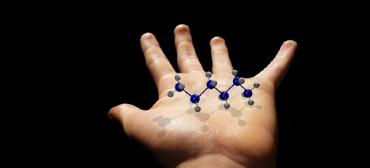Hyperbilirubinemia and Jaundice
What is hyperbilirubinemia?
Hyperbilirubinemia is a condition in which there is too much bilirubin in the blood. When red blood cells break down, a substance called bilirubin is formed. Babies are not easily able to get rid of the bilirubin and it can build up in the blood and other tissues and fluids of the baby's body. This is called hyperbilirubinemia. Because bilirubin has a pigment or coloring, it causes a yellowing of the baby's skin and tissues. This is called jaundice.
Depending on the cause of the hyperbilirubinemia, jaundice may appear at birth or at any time afterward.
What causes hyperbilirubinemia?
During pregnancy, the placenta excretes bilirubin. When the baby is born, the baby's liver must take over this function. There are several causes of hyperbilirubinemia and jaundice, including the following:
-
Physiologic jaundice Physiologic jaundice occurs as a "normal" response to the baby's limited ability to excrete bilirubin in the first days of life.
-
Breast milk jaundice About 2 percent of breastfed babies develop jaundice after after the first week. It peaks about two weeks of age and can persist up to three to 12 weeks. Breast milk jaundice is thought to be caused by a maternal factor in the breast milk that increases the reabsorption of bilirubin through the intestinal tract. The process is called enterohepatic circulation.
-
Breastfeeding failure jaundice It is caused by failure to initiate breastfeeding, resulting in dehydration, decreased urine production and accumulation of bilirubin. Late preterm infants, those who are born between 34 weeks and 36 weeks, are more susceptible to this problem. They do not have the coordination and the strength to maintain a successful breastfeeding.
-
Jaundice from hemolysis Jaundice may occur with the breakdown of red blood cells due to hemolytic disease of the newborn (Rh disease), having too many red blood cells, or bleeding.
-
Jaundice related to inadequate liver function Jaundice may be related to inadequate liver function due to infection or other factors.
Who is affected by hyperbilirubinemia?
About 60 percent of term newborns and 80 percent of premature babies develop jaundice. Infants of diabetic mothers and of mothers with Rh disease are more likely to develop hyperbilirubinemia and jaundice.
Why is hyperbilirubinemia a concern?
Although low levels of bilirubin are not usually a concern, large amounts can circulate to tissues in the brain and may cause seizures and brain damage. This is a condition called kernicterus.
What are the symptoms of hyperbilirubinemia?
The following are the most common symptoms of hyperbilirubinemia. However, each baby may experience symptoms differently. Symptoms may include:
-
Yellow coloring of the baby's skin (usually beginning on the face and moving down the body)
-
Poor feeding or lethargy
The symptoms of hyperbilirubinemia may resemble other conditions or medical problems. Always consult your baby's physician for a diagnosis.
How is hyperbilirubinemia diagnosed?
The timing of the appearance of jaundice helps with the diagnosis. Jaundice appearing in the first 24 hours is quite serious and usually requires immediate treatment. When jaundice appears on the second or third day, it is usually "physiologic." However, it can be a more serious type of jaundice. When jaundice appears on the third day to the first week, it may be due to an infection. Later appearance of jaundice, in the second week, is often related to breast milk feedings, but may have other causes.
Diagnostic procedures for hyperbilirubinemia may include:
-
Direct and indirect bilirubin levels These reflect whether the bilirubin is bound with other substances by the liver so that it can be excreted (direct), or is circulating in the blood circulation (indirect).
-
Red blood cell counts
-
Blood type and testing for Rh incompatibility (Coomb's test)
Treatment for hyperbilirubinemia:
Specific treatment for hyperbilirubinemia will be determined by your baby's physician based on:
-
Your baby's gestational age, overall health, and medical history
-
Extent of the disease
-
Your baby's tolerance for specific medications, procedures, or therapies
-
Expectations for the course of the disease
-
Your opinion or preference
Treatment depends on many factors, including the cause of the hyperbilirubinemia and the level of bilirubin. The goal is to keep the level of bilirubin from increasing to dangerous levels. Treatment may include:
-
Phototherapy Since bilirubin absorbs light, jaundice and increased bilirubin levels usually decrease when the baby is exposed to special blue spectrum lights. Phototherapy may take several hours to begin working and it is used throughout the day and night. The baby's position is changed to allow all of the skin to be exposed to the light. The baby's eyes must be protected and the temperature monitored during phototherapy. Blood levels of bilirubin are checked to monitor if the phototherapy is working.
-
Fiberoptic blanket Another form of phototherapy is a fiberoptic blanket placed under the baby. This may be used alone or in combination with regular phototherapy.
-
Exchange transfusion to replace the baby's damaged blood with fresh blood Exchange transfusion helps increase the red blood cell count and lower the levels of bilirubin. An exchange transfusion is done by alternating giving and withdrawing blood in small amounts through a vein or artery. Exchange transfusions may need to be repeated if the bilirubin levels remain high.
-
Adequate hydration with breastfeeding or pumped breast milk The American Academy of Pediatrics recommends that, if possible, breastfeeding be continued. Breastfed babies receiving phototherapy who are dehydrated or have excessive weight loss can have supplementation with expressed breast milk or formula.
-
Treating any underlying cause of hyperbilirubinemia, such as infection
Prevention of hyperbilirubinemia:
While hyperbilirubinemia cannot be totally prevented, early recognition and treatment are important in preventing bilirubin levels from rising to dangerous levels.





















